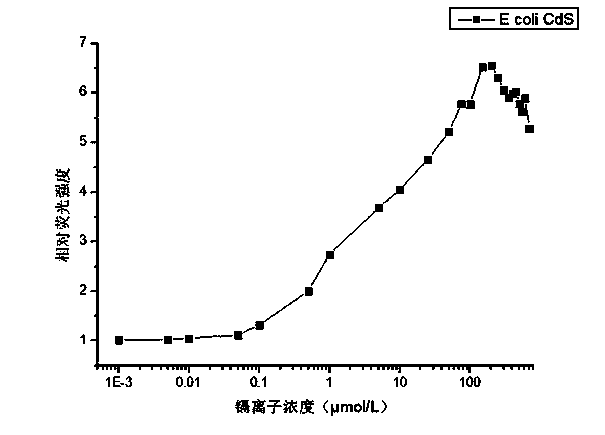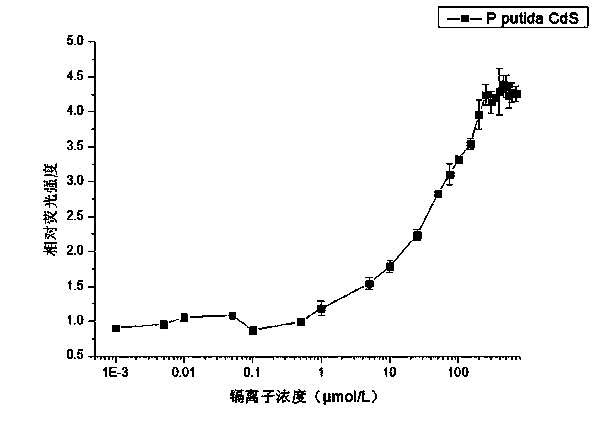Fluorescence-based cadmium ion concentration detection method by using whole cell biosensor
A biosensor, concentration detection technology, applied in biochemical equipment and methods, microbial determination/inspection, fluorescence/phosphorescence, etc., can solve the problems of complex and time-consuming sample pretreatment
- Summary
- Abstract
- Description
- Claims
- Application Information
AI Technical Summary
Problems solved by technology
Method used
Image
Examples
Embodiment Construction
[0012] Preparation of Pseudomonas putida whole-cell biosensor:
[0013] The cadmium-specific operon sequence was amplified using polymerase chain reaction (PCR) technology (see nucleotide sequence listing). The operon sequence and the green fluorescent protein coding gene are constructed into a plasmid, so that the operon sequence directly regulates the expression of green fluorescent protein (see figure 1 ).
[0014] Transform the constructed plasmid into Pseudomonas putida as follows:
[0015] 1) Take the well-grown Pseudomonas putida bacteria liquid in the logarithmic phase, centrifuge at 3000×g for 5 minutes at 4°C, and discard the supernatant;
[0016] 2) Use 1 / 2 volume of pre-cooled 0.1M CaCl 2 Resuspend, centrifuge at 3000×g for 5 minutes at 4°C, discard the supernatant;
[0017] 3) Use 1 / 10 volume of 0.1M CaCl containing 20% glycerol 2 Resuspend the bacteria to make Pseudomonas putida competent cells;
[0018] 4) Add 0.1-0.2 μg of the plasmid to 100 μl of com...
PUM
 Login to view more
Login to view more Abstract
Description
Claims
Application Information
 Login to view more
Login to view more - R&D Engineer
- R&D Manager
- IP Professional
- Industry Leading Data Capabilities
- Powerful AI technology
- Patent DNA Extraction
Browse by: Latest US Patents, China's latest patents, Technical Efficacy Thesaurus, Application Domain, Technology Topic.
© 2024 PatSnap. All rights reserved.Legal|Privacy policy|Modern Slavery Act Transparency Statement|Sitemap



